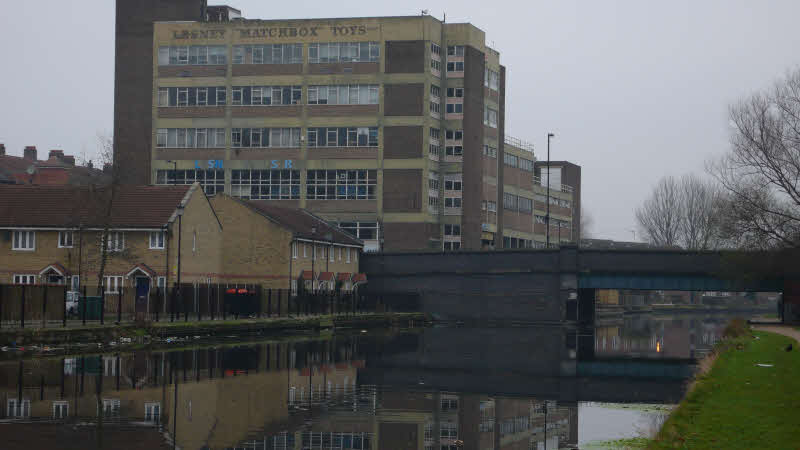. > ...

1965 to 1979
the history of Leyton and Leytonstone
from . dot to … dots – with plenty of spaces
Employment
Leyton was close to a belt of industrial concerns along the Lea Valley which were unable to survive in the new globalised economy. The London furniture industry, mainly along the Lea Navigation, virtually disappeared, including Leyton’s Austinsuite and Tottenham’s Lebus. Large sweet (confectionery) making operations at Clarnico, Hackney (photo above left) and Barrett’s at Wood Green closed, though Leyton’s smaller Bond’s survived. 6 out of 10 of Newham’s largest businesses closed between 1975 and 1981. 3,000 jobs at the Tate & Lyle factory were cut. Britain’s toys in Walthamstow and Lesney toys at Hackney (photo above right) closed. >>
Between 1959 and 1974 London lost 38% of its manufacturing jobs (compared with a loss of 24% in Manchester and only 3% for Liverpool). During the 1970s manufacturing jobs fell by 36% in Greater London compared with 25% over the whole of Britain 1. A bright spot for industry before the Second World War, London plunged far more quickly into the post-industrial economy in the second half of the twentieth century. The short-term result was high unemployment, much suffering, and expanses of derelict land.

